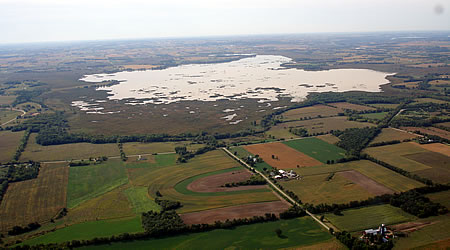Rush Lake

Site Description
This IBA is located within the WDNR’s Glacial Habitat Restoration Area and encompasses the largest prairie pothole lake east of the Mississippi River. Rush Lake formerly hosted over 1,500 acres of hardstem bulrush beds, for which the lake was named, although these have diminished greatly in recent years due to artificially high water levels, degraded water quality, and carp infestation. An extensive wetland restoration project has been underway for several years. The site contains emergent and submergent marsh, sedge meadow, wet prairie, and shrub carr, with some oak savanna and oak forest in the uplands.
Ornithological Importance
Rush Lake’s large size, productivity, and shallow water make it very valuable to breeding waterbirds and waterfowl. It remains the most important breeding site in Wisconsin for red-necked grebe. Other breeding species include least and American bitterns, Forster’s and black terns, redhead, ruddy duck, Virginia rail, black-crowned night-heron, marsh wren, and swamp sparrow. Other waterbirds, such as American white pelican, double-crested cormorant, and many herons and egrets, use the lake as a foraging area. The site is also important to grassland birds, hosting northern harrier, sedge wren, vesper sparrow, bobolink, and Eastern meadowlark. Migrating waterfowl use the lake as a stopover site and short-eared owls use the grasslands in winter.
Photo Credit: Tim Lizotte
